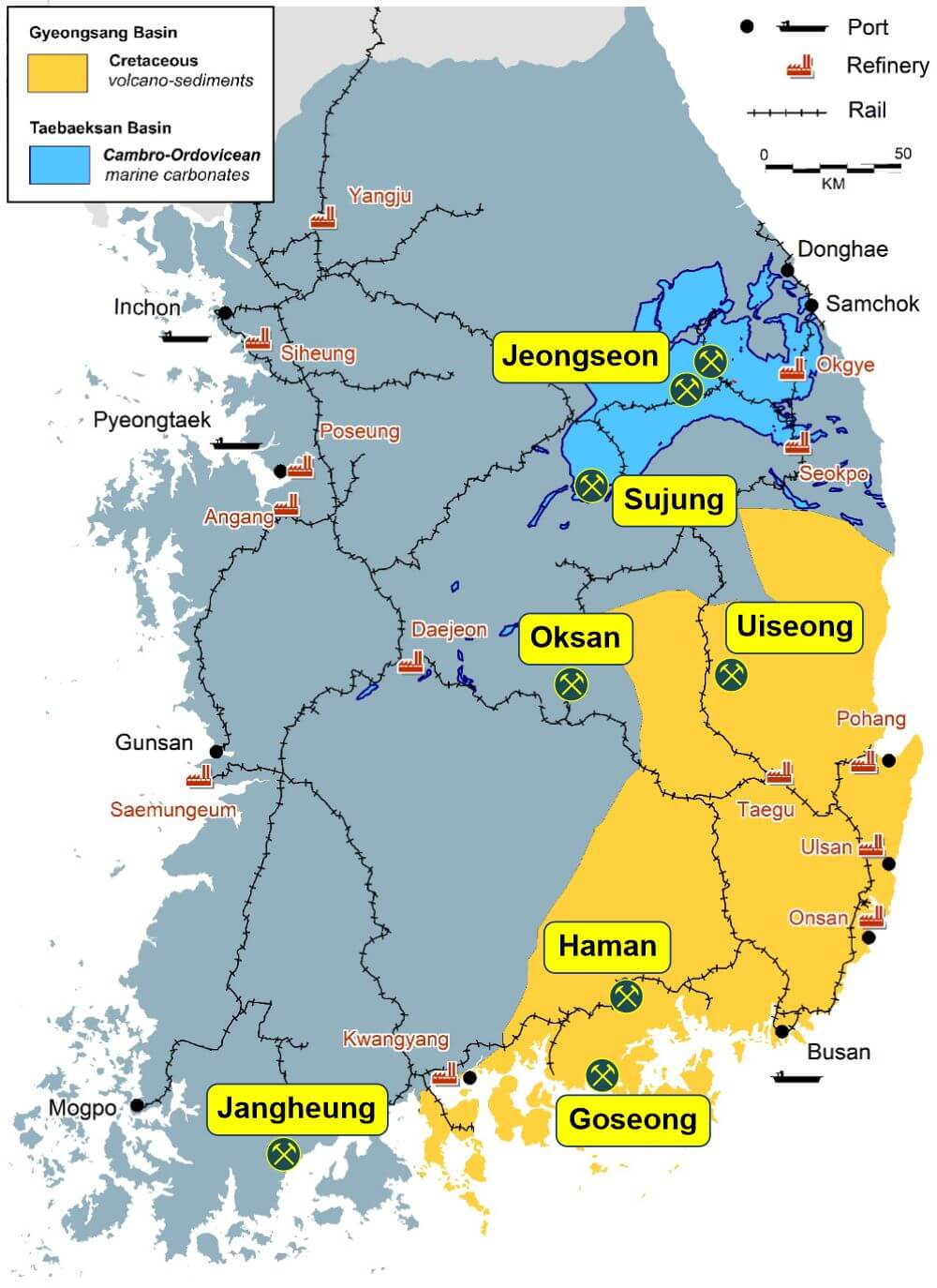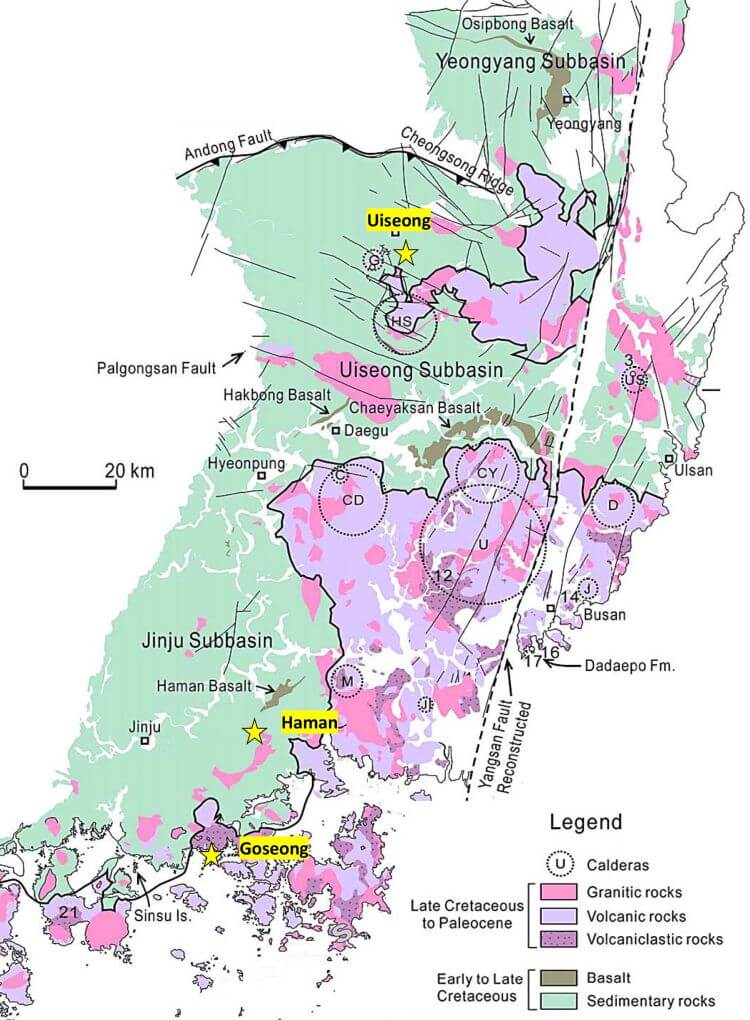Projects Overview

KML Projects
The company’s projects are mostly located in the Gyeongsang Basin, situated in the south-eastern region of the Korean peninsula. The KML projects are situated in the south-eastern part of Korea, all within 3-5 hours’ drive from Seoul.
Regional Geology of the Gyeongsang Basin
During the Cretaceous, East Asia was characterized by Andean-type continental margin formed by the subduction of the Kula Plate and the Kula-Pacific Ridge. This marginal zone was subjected to extensional tectonism of the magmatic arc, resulting in the development of fault-bounded continental depressions, including the Gyeongsang Basin. This tectonism eventually led to the opening of the Sea of Japan and the migration of the Japanese island arc away from Eurasia.
Within its deepest part in the Nakdong Trough, the Gyeongsang Basin sequence attains a maximum thickness of about 9000m. In general, the sequence mainly strikes north-northeast to north-south, dipping gently-moderately to the southeast. It is an extensional basin characterized by an interconnected set of listric extensional faults and associated transfer faults. These faults extend into the basement and are in part formed by the reactivation of basement structures, which were the locus of magmatic activity both in the basin and the basement to the west. The Gyeongsang Basin can be subdivided into 3 distinct tectono-sedimentary cycles/episodes of tectonism, sedimentation and associated igneous volcanism and intrusive activity, including:
Cycle 1
During Cycle 1, the Gyeongsang Basin developed initially as an intra-arc basin with deposition of a non-marine sequence comprising the basal Early Cretaceous continental “red bed” Sindong Group into the Nakdong Trough. The sedimentary environments evolved from alluvial fan through floodplain to lacustrine and were deposited under arid climatic conditions.
Cycle 2
During Cycle 2 in the Middle Cretaceous, scattered andesitic and basaltic-andesitic volcanic centres formed, resulting in deposition of the volcano-sedimentary Hayang Group under prevailing semi-arid climatic conditions.
Cycle 3
The basin then evolved rapidly during Cycle 3 into a mature volcanic arc during the Late Cretaceous, with extrusion of alternating lava flows and pyroclastics of the volcanic-dominated Yuchon Group. The composition of the volcanic rocks changed from intermediate to late acid volcanism.
Emplacement of stocks and batholiths of the Bulgugsa Series was essentially co-magmatic with Cycle 3. The composition of the volcanic and igneous rocks changed from initial intermediate to late-stage acid intrusions. The wide variety of igneous rocks indicates a multi-phase, highly fractionated and evolved intrusive magma underlies the basin.

Regional Geology of the Taebaeksan Basin
The Sujung and Jeongseon projects are located in the Taebaeksan basin, situated in the north-eastern mountainous region of South Korea.
The Taebaeksan basin formed as a ‘rift basin’ between the Precambrian metamorphic basement Gyeonggi and Yeongnam massifs of the Sino-Korean and South China Cratons. The basin evolved in the Cambrian (540-488Ma) from a marine carbonate “platform”, into a rift basin infilled by a marine shelf sequence during the Ordovician (488-444Ma).
The Taebaeksan basin hosts the operating mines at Sangdong W, the Moland Mo mine and the Shinyemi magnetite mine. The basin also hosts the historically famous Yeonwha Pb-Zn-Ag mines, which operated during 1960-1992.

Geology Map of the Taebaeksan Basin
Strategic Location
– Major base metals refineries (Seokpo & Onsan)
– Major markets for metals in region (Korea, Japan, China)
Low Sovereign Risk
– Ranked N0.5 globally by World Bank for doing business
– Low sovereign risk (‘Resource Nationalism Index’)
– Free trade agreement – Australia & Canada
World Class Infrastructure
– Power, road, rail, workforce, cities, airports, ports, power & communications
– Existing equipment manufacturers and supply chain
